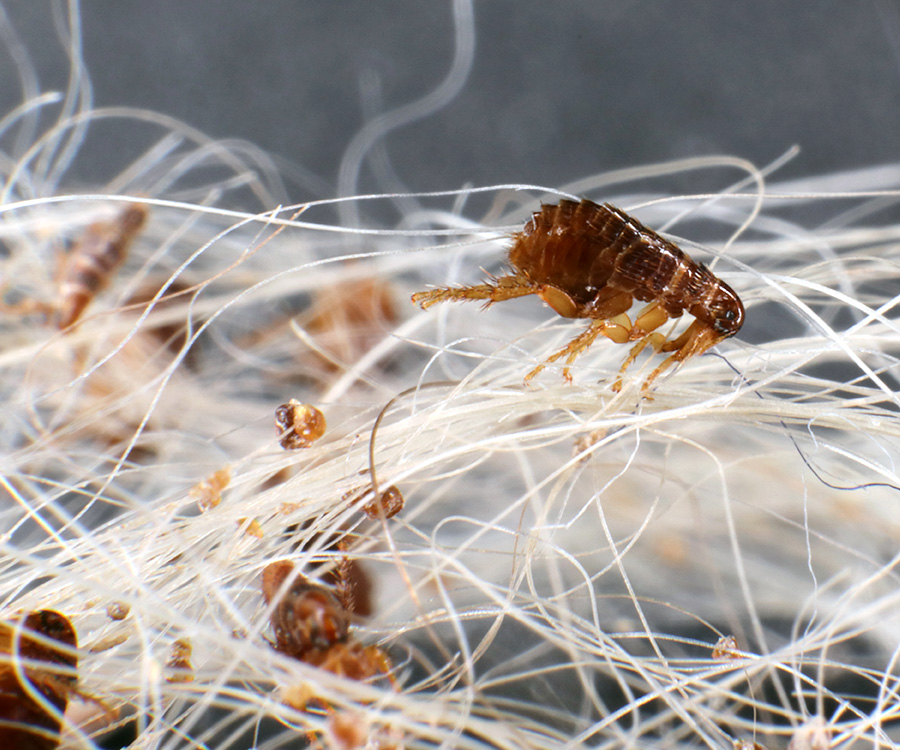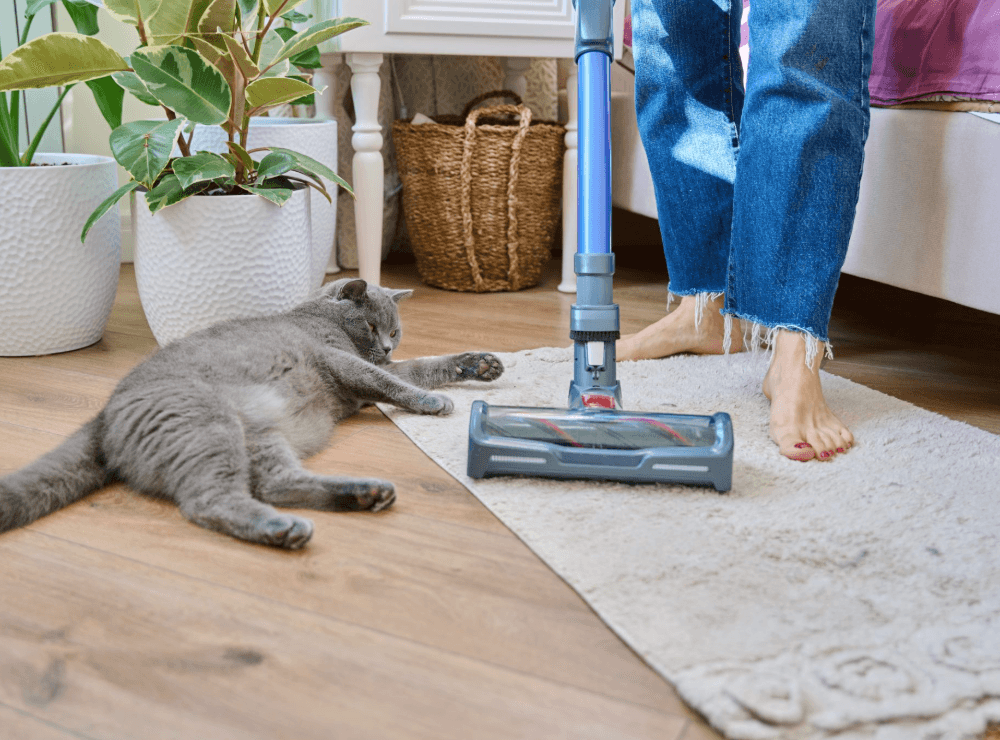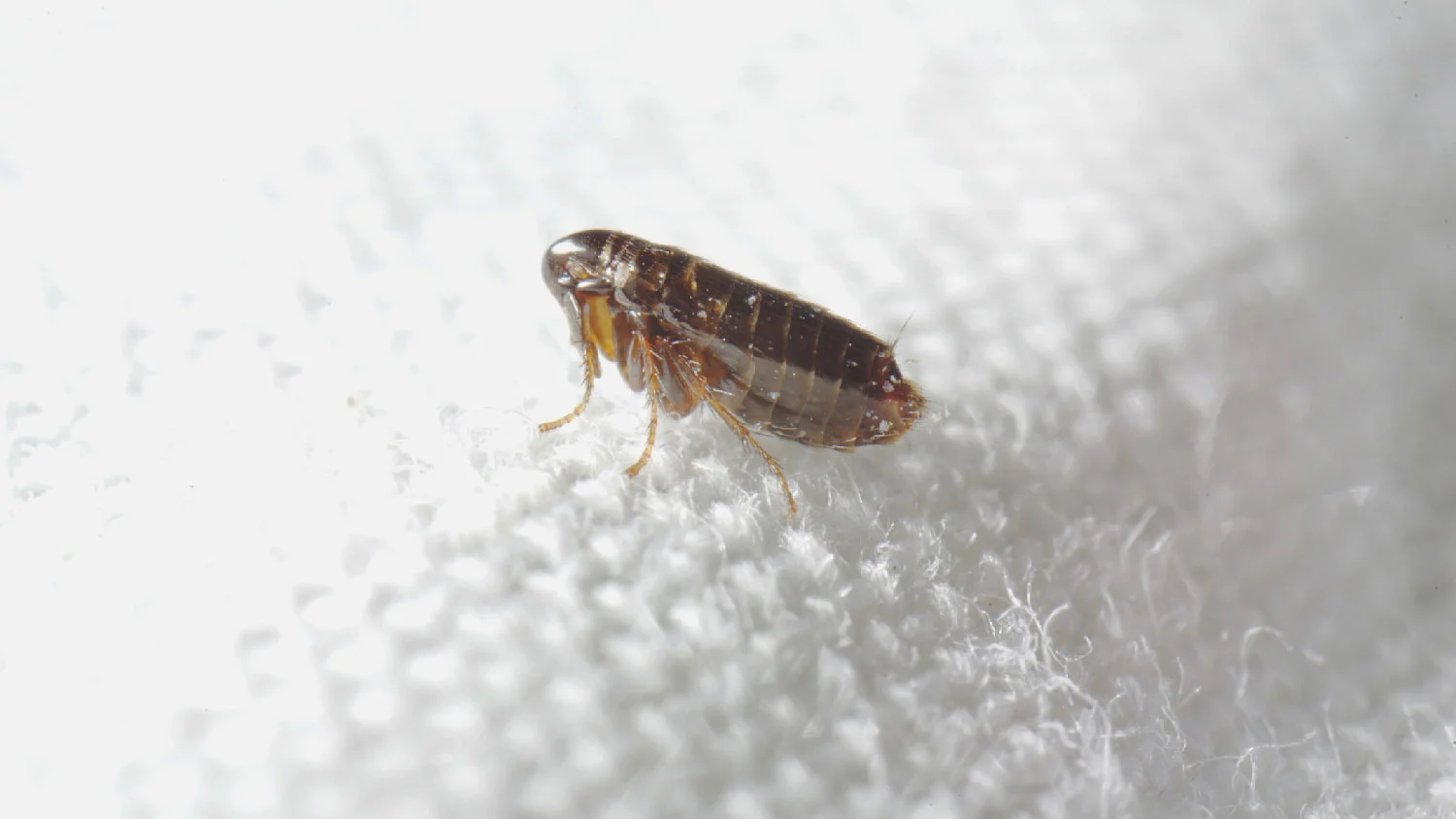Fleas are more than just a nuisance. For many households, especially those with pets, they create an overwhelming cycle of cleaning, itching, and frustration. One of the biggest challenges in flea control is not just removing the visible adults, but identifying where fleas hide in your home—often in places you would never expect. Understanding their behavior is crucial, but so is having a clear, strategic approach that doesn’t just treat the problem on the surface.
This guide goes beyond basic tips. It addresses the real questions homeowners ask when they’re dealing with fleas, like: Why do they keep coming back? Why does cleaning not solve the problem? And most importantly, how can you make sure every last hiding spot is addressed?
Understanding How Fleas Spread Indoors

Once fleas enter your home, they don’t stay where you first find them. The spread is fast and often invisible until it becomes unmanageable. Most indoor infestations begin with pets, but they can also start with second-hand furniture, clothing, or visitors who’ve unknowingly carried fleas in.
After a flea jumps onto a pet, it feeds and starts laying eggs within hours. These eggs don’t stick to fur. They fall off onto your floor, bedding, or upholstery. Over the next several days, larvae hatch and crawl into dark crevices where they’re almost impossible to detect. They don’t need the host anymore. They’ve found the perfect environment right in your home.
Humidity plays a huge role in how quickly fleas spread indoors. Rooms with carpets, heavy fabrics, or poor ventilation create microclimates that allow flea eggs to hatch faster and larvae to thrive. If a room feels stuffy or warm, it’s at higher risk.
Why Fleas Move from Pets to Furniture and Floors
Many pet owners assume fleas stay on their dog or cat. The truth is, pets are only the transport system. Fleas move from animals to furniture, rugs, and floors to complete their life cycle. Eggs fall off as pets walk or rest, turning the entire home into a breeding zone.
This is why treating only the pet doesn’t work. The infestation exists off the animal. Furniture cushions, floorboards, and carpeted stairs become egg nests. Within days, larvae are crawling deep into fabrics or cracks, hidden from sight. Even if you don’t see fleas, they’re still developing under your feet.
Another key reason fleas leave pets is safety. Adult fleas feed on the host, but the larvae are vulnerable to light and movement. They survive better in low-traffic, shaded areas like under couches or behind furniture. That’s where the real infestation happens.
The Life Cycle of Fleas Inside the Home
To eliminate fleas effectively, you must disrupt every part of their life cycle. A common mistake is focusing only on adult fleas. But the majority of an infestation is invisible—eggs, larvae, and pupae account for over 90% of the population at any given time.
Here’s how the cycle works:
- Eggs hatch within 2 to 5 days, depending on temperature and humidity
- Larvae feed on flea feces and organic material for 5 to 11 days
- Pupae develop inside protective cocoons and can remain dormant for weeks
- Adults emerge and seek a host for feeding and reproduction
Pupae are especially difficult to remove. They wait until conditions are ideal—movement, warmth, or carbon dioxide—to emerge. That’s why infestations often return after treatment. The pupae weren’t killed, just waiting.
Common Places Where Fleas Hide in Your Home

Carpets and Rugs
Carpets are the most common indoor hiding place for fleas. The fibers trap eggs and flea dirt. Larvae burrow deep where light and vacuum cleaners can’t reach. Wall-to-wall carpeting in rooms where pets spend time becomes a silent breeding ground.
Even high-traffic areas aren’t safe. Unless cleaned with high-heat steam or specialized vacuums, flea larvae can continue developing for weeks. Pay close attention to corners and under heavy furniture where cleaning is inconsistent.
Treating carpet isn’t just about vacuuming. It’s about persistence. Fleas won’t be gone after one pass.
Sofas, Cushions, and Upholstered Furniture
If your pet sleeps on the couch, your furniture is part of the infestation. Eggs fall into the seams, under cushions, and behind the backrests. Fleas thrive in the dense fabrics and dark corners of sofas and chairs.
Vacuuming helps, but most vacuums don’t reach inside tight upholstery. Use targeted crevice tools, or better yet, a steam cleaner. If the furniture is old or second-hand, it might have already had fleas when it entered your home.
Regularly rotating cushions and exposing furniture to sunlight can reduce moisture and disrupt the flea cycle.
Pet Beds and Blankets
Fleas love pet bedding for one reason: it’s warm, smells like the host, and rarely gets cleaned often enough. Eggs, flea dirt, and larvae collect fast. Even if you treat your pet, untreated bedding reintroduces the infestation within days.
Wash all pet items in hot water (at least 60°C) and dry on high heat. Avoid soft beds with thick stuffing during infestations, as they’re harder to clean thoroughly.
Consider having two or more washable beds and rotating them throughout the week.
Cracks in Floors and Baseboards
Hardwood floors don’t protect you. In fact, the gaps between boards and along baseboards are favorite hiding spots for flea larvae and pupae. They offer dark, stable environments that are rarely disturbed by foot traffic or vacuuming.
Larvae crawl into these gaps and begin to spin cocoons. Even intense vacuuming won’t always reach them. Seal any cracks with caulk or use a heat-based steam cleaner for better results.
If you see fleas returning despite treatment, these cracks are a likely reason.
Curtains and Fabric Surfaces
Curtains aren’t the first place people check, but they become contaminated when pets brush against them or sleep nearby. Flea eggs are lightweight and can cling to fibers easily.
Heavy or pleated curtains create cool, shaded areas where flea larvae can develop. While they’re not a primary site, leaving them untreated allows low-level infestations to persist.
Remove and wash all curtains during treatment. If not washable, consider replacing them or treating with a fabric-safe insecticide.
Laundry Baskets and Piles of Clothes
Fleas can survive in dirty laundry, especially if it’s covered in pet hair or skin flakes. When laundry piles up in a warm, humid room, it creates a soft, ideal place for flea eggs to hatch and larvae to feed.
Clothing left on the floor or in open baskets can spread fleas from room to room. Always wash clothes during treatment cycles and don’t let laundry accumulate in pet-accessible areas.
Under Beds and Furniture Corners
The least disturbed areas in a home—under beds, behind couches, or in furniture corners—are perfect flea habitats. Low light, warmth, and dust make these ideal for flea development.
Even homes without carpet are vulnerable if these spaces go uncleaned. Flea eggs and larvae can survive long periods in these hidden spots, only emerging when triggered.
Use flashlights and long vacuum tools to inspect and treat these areas thoroughly.
Less Obvious Places Where Fleas Can Hide

Car Interiors (Seats and Carpets)
If your pet rides in your car, fleas are likely living there too. Eggs fall off onto seats and floor mats. Flea dirt accumulates in upholstery seams and trunk linings.
Fleas can complete their life cycle inside the car, especially during warm weather. Clean the interior thoroughly, focusing on areas your pet touches. Use a fabric-safe insecticide if necessary.
Pet Toys and Grooming Brushes
Pet toys, brushes, and even collars often go untreated. Yet these items trap hair and flea debris that can restart infestations.
Plastic and rubber toys should be washed regularly. Brushes should be cleaned with hot water and mild soap. Replace heavily infested items.
Neglecting these small items can undo your entire flea treatment process.
Behind Appliances and Radiators
Warmth and dust make the areas behind appliances perfect hiding places for flea larvae. Washing machines, dryers, and radiators are rarely moved or cleaned.
Inspect these spaces with a flashlight. Vacuum thoroughly and use heat treatments where safe. Consider applying a growth regulator spray to disrupt any unseen flea development.
Garden or Balcony Areas (if Pets Go Outside)
Outdoor spaces are often ignored, but fleas can live in shaded, moist parts of gardens or balconies. Fleas drop off pets and hide in soil, under leaves, or in patio furniture.
Clear away yard debris, keep the grass trimmed, and limit pet access to these areas during treatment. Use a pet-safe outdoor flea spray if reinfestation occurs.
How to Detect Flea Hiding Spots
Signs of Flea Activity (Dirt, Eggs, or Movement)
Fleas aren’t always visible, but flea dirt and eggs offer clear signs. Flea dirt looks like black grains and turns red when wet. Eggs are white, about the size of a grain of salt.
Check bedding, floor edges, and upholstery seams. If you see black specks on your pet or their bedding, it’s almost always flea-related. Frequent scratching and red bite marks are additional clues.
Flea movement can also be visible when vacuuming or lifting cushions. Adults jump quickly in search of hosts.
Using a Flea Comb or White Sock Test
Use a fine-toothed flea comb on your pet’s fur, especially near the neck, tail, and belly. The comb pulls out fleas and dirt that confirm an infestation.
Try the white sock test: walk around the house in tall white socks and inspect for tiny fleas that jump onto the fabric. This works especially well on carpets and near pet resting areas.
Repeat the test in different rooms to pinpoint infestation zones.
How to Get Rid of Fleas in Each Area of Your Home
Vacuuming and Steam Cleaning Tips
Vacuum thoroughly and often. Focus on edges, under furniture, and anywhere pets rest. Use a vacuum with strong suction and a HEPA filter to trap flea particles.
Steam cleaning is the most effective non-chemical method. High temperatures kill all life stages instantly. Target carpets, rugs, pet bedding, and upholstery. Repeat every few days during active infestation.
Immediately dispose of vacuum bags outside or clean canisters with hot water.
Washing Fabrics and Pet Bedding
Use hot water cycles above 60°C. Wash blankets, pet beds, cushion covers, and even curtains. Dry on the hottest setting to ensure eggs and larvae are destroyed.
Rotate between sets of washable bedding during treatment. Clean every three days until no signs of fleas remain.
Don’t forget to wash your pet’s collars and toys.
Using Flea Sprays, Foggers, or Natural Remedies
Choose sprays containing Insect Growth Regulators (IGRs) like methoprene or pyriproxyfen. These break the flea cycle by preventing larvae from maturing.
Use foggers for larger areas but follow safety instructions strictly. Natural options like diatomaceous earth help dry out larvae but require careful handling and frequent reapplication.
Always treat all rooms simultaneously to avoid migration.
Preventing Fleas from Coming Back
Regular Pet Treatments
Apply vet-approved flea prevention products consistently. Options include topical treatments, chewable tablets, and flea collars. Products like fluralaner, fipronil, or selamectin are commonly recommended.
Treat every pet in the household, not just the one showing symptoms. Missing even one round can restart the cycle.
Monitor your pet for scratching or behavior changes even after treatment.
Home Hygiene and Seasonal Prevention
Vacuum regularly, especially during spring and summer. Wash pet bedding weekly and check carpets or furniture monthly.
If your pets spend time outside, inspect their fur before reentering. Maintain yard hygiene to reduce flea exposure at the source.
Consider scheduling preventive deep cleans at the start and end of flea season.
When to Call Professional Pest Control
If you’ve cleaned repeatedly, treated your pet, and fleas keep returning, it’s time for professional pest control. Experts can identify overlooked hotspots and use stronger, more targeted treatments.
Fumigation, heat treatment, and advanced growth regulators are options professionals use when home methods aren’t enough. Many infestations require two or more visits for full resolution.
Don’t wait too long. The longer you delay, the harder it becomes to fully eliminate the problem.
Conclusion: Finding and Eliminating Every Flea Hiding Spot
Fleas don’t go away on their own. They adapt, hide, and return stronger unless every hiding spot is addressed. Knowing where fleas hide in your home gives you the power to break the cycle.
From carpets to car seats, and pet toys to baseboards, every area matters. A successful flea treatment requires consistency, awareness, and a full-home strategy. Combine this with proactive pet care and seasonal maintenance, and you’ll regain control over your space.
If you’re serious about eliminating fleas, treat it like a system. Not a surface problem, but a layered one—because that’s exactly how fleas operate.
